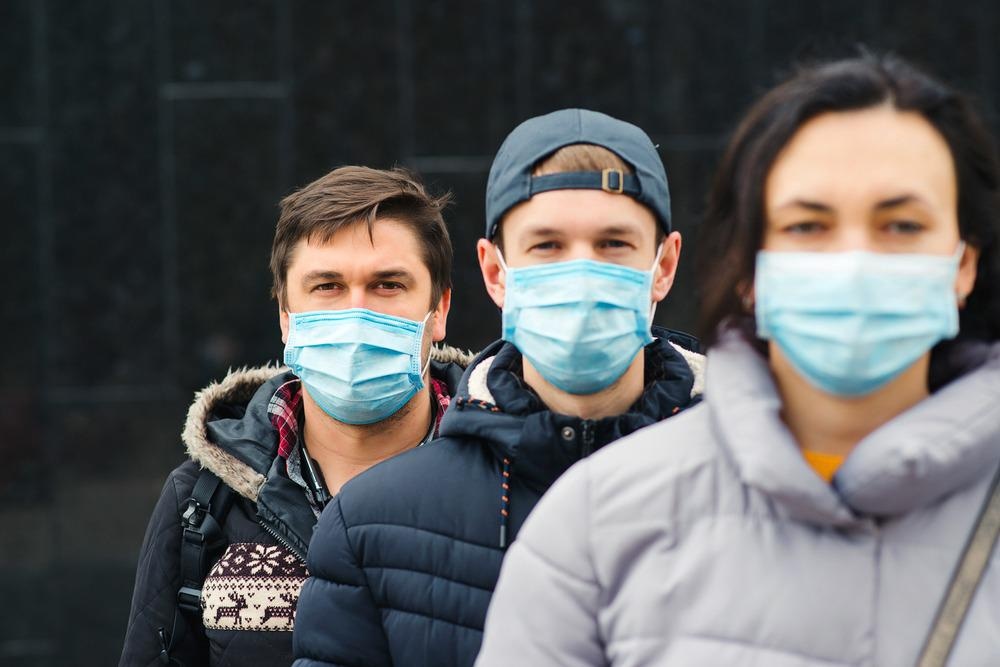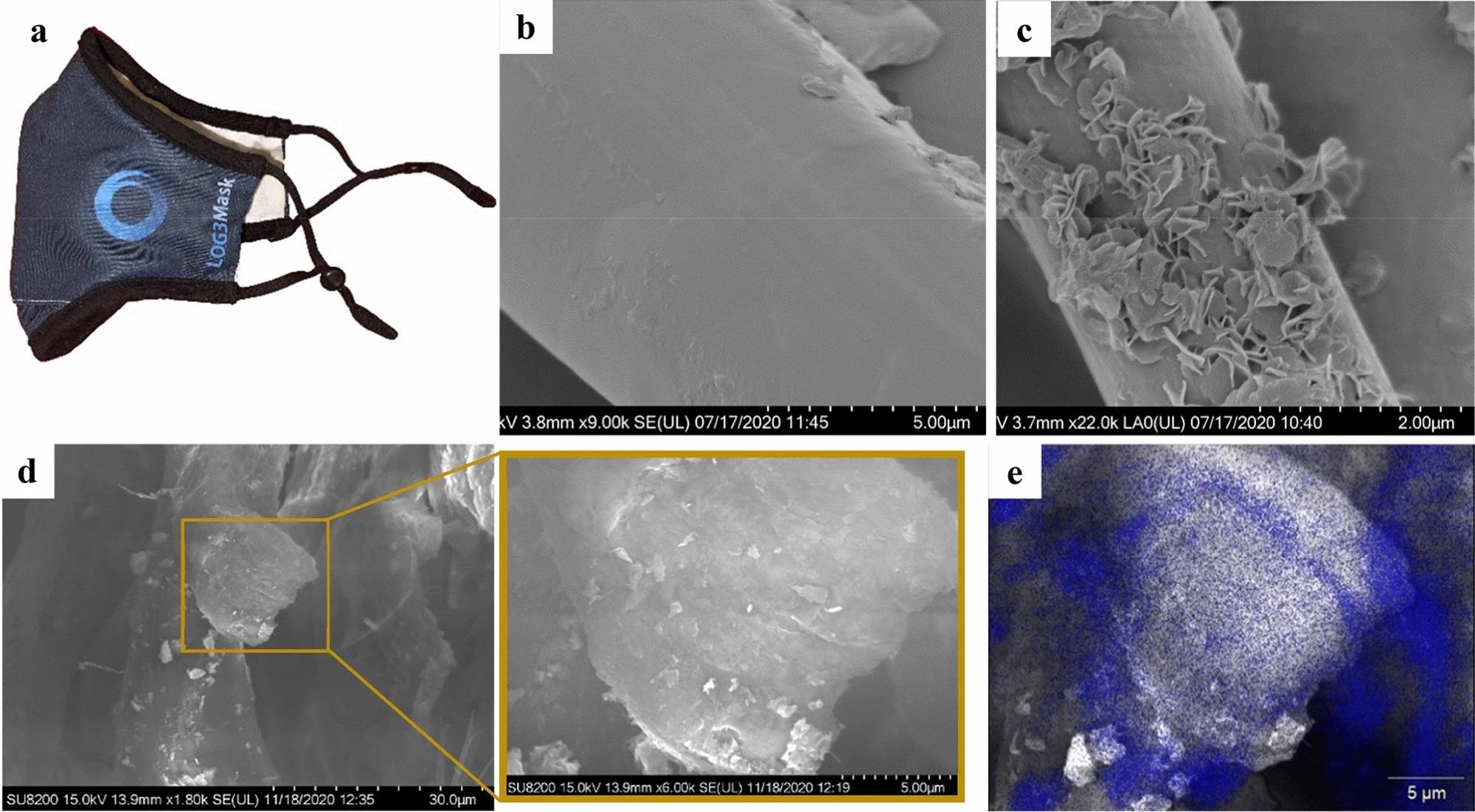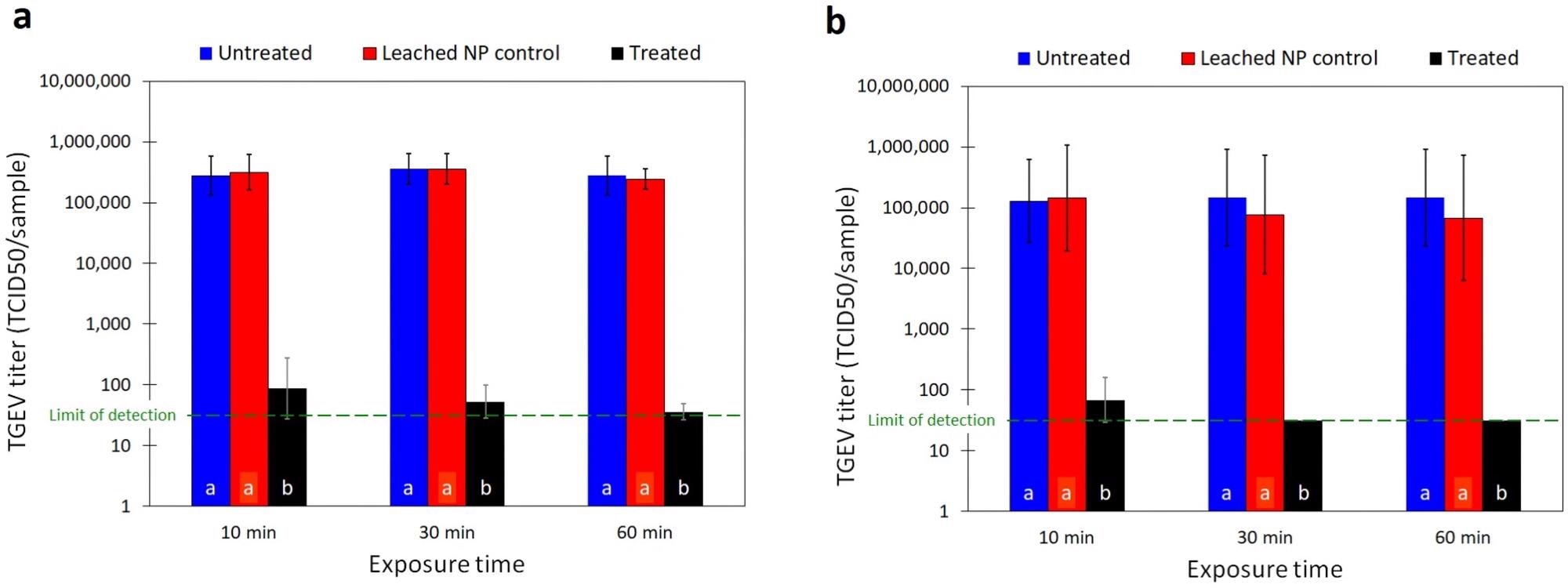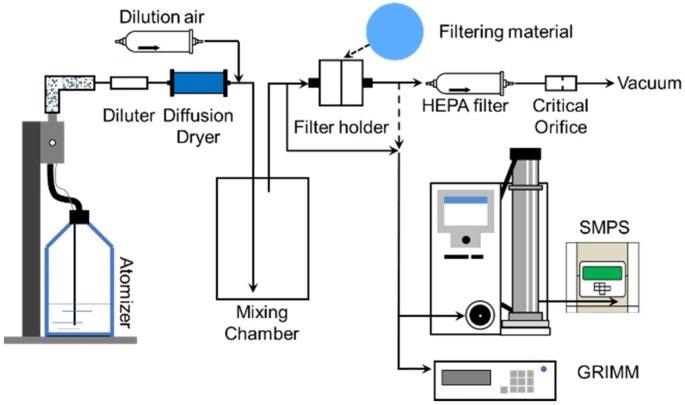Due to the high transmissibility rate and the necessity for adequate personal protective equipment, the SARS-CoV-2 (COVID-19) pandemic represents a major challenge to the medical industry. A recent study published in the journal Scientific Reports focuses on the development of zinc oxide nanoparticle face masks using a novel synthesis approach.

Study: Durable nanocomposite face masks with high particulate filtration and rapid inactivation of coronaviruses. Image Credit: Volurol/Shutterstock.com
ZnO nanoparticles have demonstrated remarkable antibacterial characteristics and are widely used as a safe ingredient in food and cosmetics.
Metallic Nanoparticles: Properties and Limitations
The investigation and use of materials on the nanoscale (10-9 m) is known as nanotechnology. These nanomaterials have distinct physicochemical characteristics compared to their larger counterparts, and they are widely used in medical, pollution removal, and aviation industries.
Antibacterial uses of metallic nanoparticles such as copper, iron, silver, and their oxides are now seen in everyday clothing to help combat microorganisms. Since these nanomaterials have a high surface area to volume ratio, they can expose more of the metal oxide surface to bacteria, allowing metal ions to enter and eliminate them.

SEM images of a polypropylene facemask and polyester-cotton blend fabric before and after functionalization in a commercial oven. (a) Example of facemask designed by Claros Technologies, (b) untreated polypropylene textile, (c) zinc-polypropylene nanocomposite textile with “petal” shaped zinc particles, (d) polyester-cotton fabric at various magnifications showing internal nanoparticle growth. In image (d) the yellow boxes correspond to a fiber region which is magnified in the following image to show nanoparticle growth in the fiber cross-section. (e) Energy-dispersive X-ray spectroscopy (EDX) imaging of cross section image, (d) with zinc highlighted in blue. © Gonzalez, A. et al. (2021)
Since the advent of the COVID-19 pandemic, nanocomposites have been explored for possible healthcare uses such as prevention, better detection, and effective therapy.
Findings demonstrate high antimicrobial efficacy against particular viral strains, but toxicity hazards have also been found based on the nanoparticle dose. Furthermore, typical nanomaterials such as silver and copper oxides damage the atmosphere and marine life due to particle leakage.
The present manufacturing methods involve applying pre-formed nanoparticles to the substrates and adhering to the surface. However, this adherence is often poor, and with repeated usage or environmental exposure, nanoparticles are expelled from the coated material.
Importance of Zinc Oxide Nanoparticles
Because of its harmless nature and simplicity of production, zinc oxide is an appealing alternative to these polluting metallic nanoparticles. Zinc oxide nanoparticles have remarkable antimicrobial characteristics since the Zn2+ ions produced on the surface can infiltrate the cell and change its physiological functions. Furthermore, significant amounts of Zn2+ ions can destroy cells by causing reactive oxygen species to develop.

Titer of infectious TGEV particles recovered from (a) nylon-cotton fabric specimen and (b) face mask specimens after 10, 30, and 60 min contact times. The columns are the geometric mean of 6 replicates. The error bars represent ± one geometric standard deviation. The scattered green line is the limit of detection. Same letters at each column base indicate geometric means that are not significantly different from one another at each contact time p ≥ 0.05. © Gonzalez, A. et al. (2021)
The Food and Drug Administration (FDA) considers zinc oxide to be a safe ingredient, which means it has been thoroughly studied for safe usage in commercial products and has a low environmental impact.
Even though zinc oxide and zinc nanomaterials are relatively benign, huge quantities emitted by traditional coating techniques could have harmful impacts on human health, particularly when breathed through a face mask. Using a different production approach that integrates the nanoparticles into the mask material will improve effectiveness, protect users, and reduce flaking over time.
Fabrication of ZnO Nanoparticles for COVID-19 Protection
Medical and textile face masks, as well as personal protective equipment, are being used as precautionary measures in the COVID-19 pandemic to help decrease the infection rate and spread.
For the most part, this is attributed to the fact that SARS-CoV-2 stays contagious on objects for 3–14 days after they are cleaned.

Experimental setup for particle filtration performance testing. © Gonzalez, A. et al. (2021)
In this study, the researchers suggest that a unique method of nanoparticle formation, known as crescoating, can be used to produce an operational composite material, a multi-phase substance in which one of the components is a metal or non-metal nanoparticle, that has enhanced durability and reliability over conventional surface-treated materials.
ZnO nanoparticles were utilized for the fabrication of face masks for protection against COVID-19.
Conclusions and Prospects
The use of the Crescoating synthesis method for the fabrication of antimicrobial nanomaterials has shown good virus protection while requiring minimum manufacturing resources. Because the zinc oxide material produced is non-toxic, very robust, and can be rinsed and dried up to 100 times without losing its usefulness, it can be widely used for the production of face masks. In addition, independent testing has shown that the components are non-irritating and non-allergic.
In short, the rising need for the development of improved personal protection equipment that is safe for human interaction as well as the environment is addressed in this research.
In the future, more research should be carried out to determine the antiviral activity of various fabrics for medical and commercial usage, such as lab coats, bed linens, and even plastics, to improve patient welfare.
Continue reading: World-First Graphene Membrane Face Mask that Kills COVID-19.
Reference
Gonzalez, A. et al. (2021). Durable nanocomposite face masks with high particulate filtration and rapid inactivation of coronaviruses. Scientific Reports 11, 24318. Available at: https://www.nature.com/articles/s41598-021-03771-1
Disclaimer: The views expressed here are those of the author expressed in their private capacity and do not necessarily represent the views of AZoM.com Limited T/A AZoNetwork the owner and operator of this website. This disclaimer forms part of the Terms and conditions of use of this website.